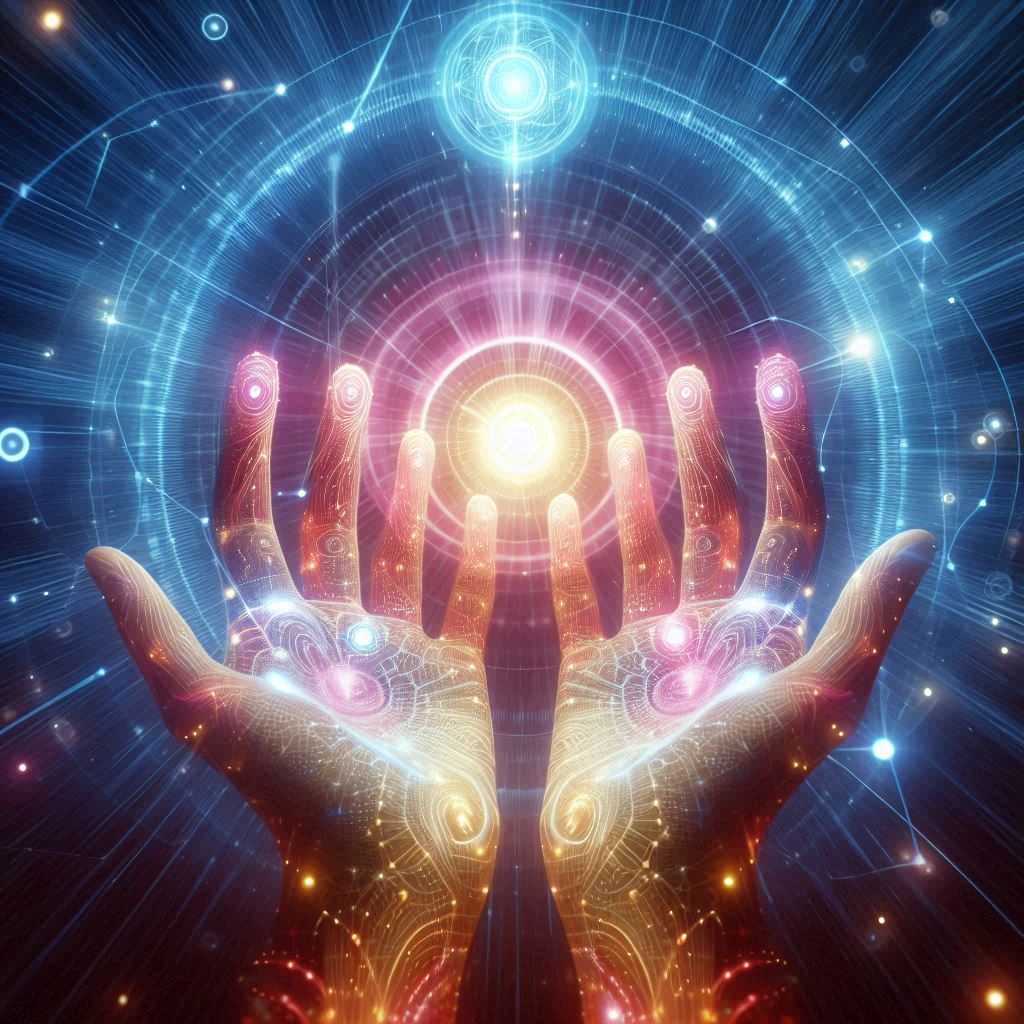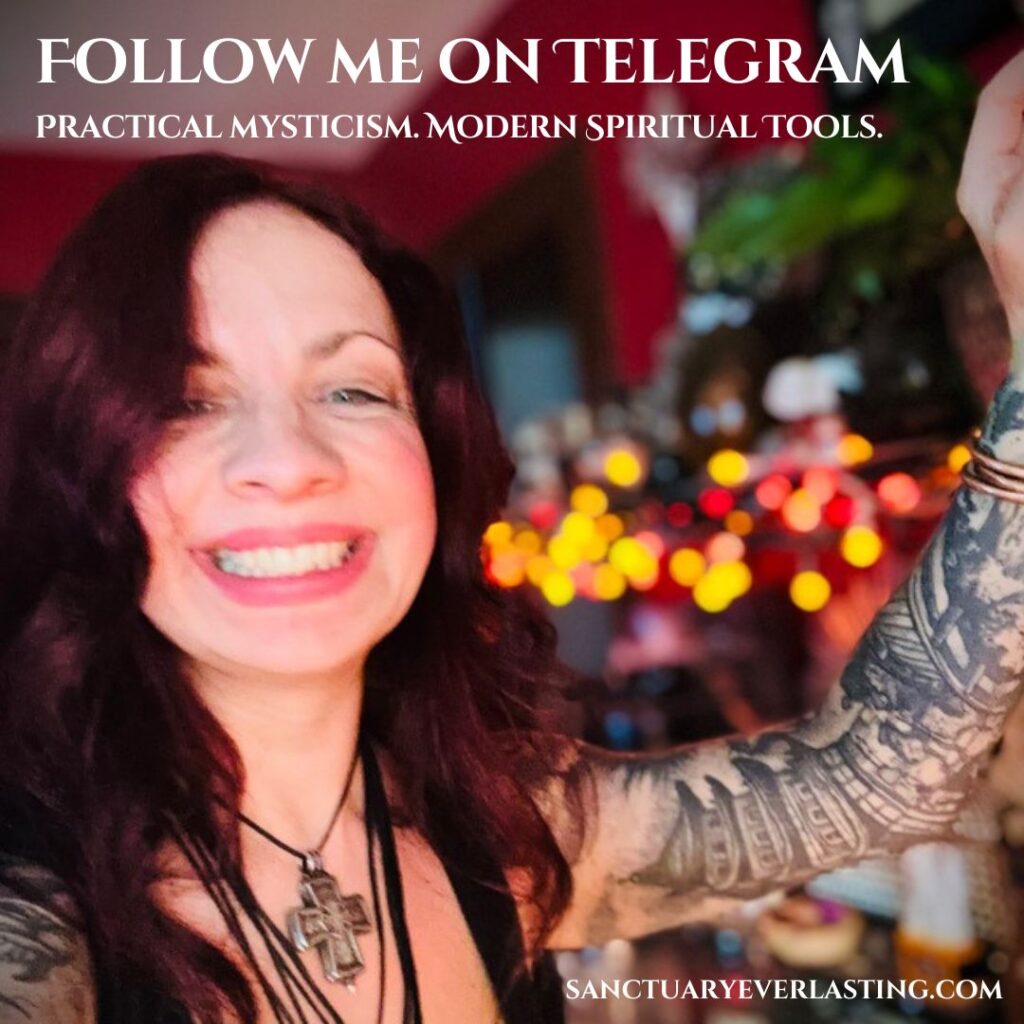3 Exercises to Help Unlock Your Vision
You don’t have to be a mystic or a spiritual master to seeing the human aura.
Anyone can develop the skill with patience, practice, and intention.
In this guide, we’ll explore practical ways to tune into your intuitive perception and see human auras.
Here are three simple but powerful exercises to help you begin your journey.
“The day science begins to study non-physical phenomena, it will make more progress in one decade than in all the previous centuries of its existence.” — Nikola Tesla
Understanding the Human Aura: What Exactly is it?

The human aura–also known as the biofield–is essentially an energetic field surrounding each person.
It’s believed to reflect one’s physical, emotional, mental, and spiritual state.
This energy field emits various colors and intensities, shifting and evolving based on your emotions, thoughts, physical health, and spiritual growth.
The aura extends from your physical body and is visible as colored bands or a gentle glow, usually perceived by intuitive or psychic sight rather than the physical eyes alone.
Throughout history, cultures worldwide—from ancient Egypt and India to Native American traditions—have described the aura, though they often used different terms.
They agreed on its fundamental nature as a powerful indicator of a person’s inner state.
Take a deep dive into the Anatomy of the Human Aura here.
Why Learn to See Auras?

There are a ton of benefits to developing aura perception skills, including:
- Improved Intuition: Helps you better understand people, situations, and relationships intuitively.
- Greater Empathy: Enhances emotional intelligence by sensing others’ emotional states.
- Personal Growth: Identifies your emotional and spiritual condition, helping you evolve and grow spiritually.
- Health Insights: May assist in identifying emotional or physical imbalances before they manifest as symptoms.
The ability to perceive auras enhances overall self-awareness and interpersonal relationships, offering profound insights into yourself and those around you.
Practicing Aura Vision Development
These things will help you on your journey to learn to see auras:
- Patience and Practice: Like any skill, aura perception requires dedicated practice. Be patient and persistent.
- Openness: Keep an open mind. Skepticism or strong expectations may hinder progress.
- Relaxed Mind: A calm, clear mind is crucial to perceiving subtle energies. Regular meditation and deep breathing exercises help greatly.
- Softened Gaze: Use your peripheral vision rather than directly staring. The aura often appears subtly at the edges of your field of vision.
Exercise #1: The Hand Aura Exercise

Your hands are the perfect starting point because the aura here is usually easy to perceive clearly.
How to do it:
- Find a Comfortable Space: Sit quietly in a room with soft, natural lighting. Avoid bright, harsh lights.
- Relax and Breathe Deeply: Spend a minute calming your mind with slow, relaxed breathing.
- Focus on Your Hands: Hold your hands out about 12 inches in front of you, with your palms facing each other and fingertips lightly separated.
- Soft Gaze Technique: Rather than staring, gently gaze through your fingertips. Maintain this softened gaze for at least a minute.
- Observe the Aura: Slowly, you might begin seeing a gentle white or colored outline around your fingertips. Initially subtle, this aura strengthens with practice.
Practice daily, gradually increasing observation time. Soon, colors may appear, and your confidence will grow.
Exercise #2: Observing Another Person’s Aura

Once comfortable with your hand aura, it’s time to step it up by observing the aura of another person. This is more complex and rewarding.
How to do it:
- Prepare a Calm Environment: Sit facing a friend or family member in front of a neutral-colored wall in low, gentle lighting.
- Relax and Center Yourself: Close your eyes briefly. Take deep breaths and clear your mind.
- Softly Focus Beyond the Person: Open your eyes gently and focus softly past the person’s head or shoulders.
- Watch for the Aura: Patiently observe the area around their head and shoulders. Notice a soft haze or colored glow forming around them.
- Stay Open and Relaxed: Trust your intuitive perception. Don’t force or strain your eyes; the aura will emerge subtly.
Consistent practice is key.
Regular sessions with different individuals provide diverse experiences, enhancing your perception abilities and intuitive insights.
Exercise #3: The Mirror Method

This powerful self-assessment helps recognize your emotional and spiritual states through your aura.
How to do it:
- Use a Mirror: Stand or sit comfortably in front of a mirror with soft, diffused lighting behind you.
- Calm Your Mind: Spend several moments taking slow breaths to reach a relaxed, meditative state.
- Softly Observe Yourself: Look gently past your reflection, specifically around your head, shoulders, and torso, maintaining a softened gaze.
- Observe Subtle Energy: Initially, you’ll notice a faint, whitish glow surrounding your body. With practice, colors representing your emotional or energetic states may appear.
- Reflect and Journal: Record what you see, including colors, intensity, and personal sensations. Over time, this provides valuable insights into your emotional and spiritual shifts.
The mirror method not only enhances aura perception but fosters profound self-awareness and self-understanding.
Interpreting Aura Colors: A Brief Guide

Once you start seeing colors, understanding their meanings helps interpret your observations.
For a deeper dive into the meaning of colors, check out my guide, The Metaphysical Meaning of Color.
Here are some common meanings that people assign to different colors:
- Red: Passion, vitality, energy (but possibly anger or stress).
- Orange: Creativity, sociability, enthusiasm.
- Yellow: Optimism, intellect, joy.
- Green: Balance, healing, growth, harmony.
- Blue: Calmness, communication, spirituality.
- Indigo/Purple: Spiritual insight, intuition, deeper awareness.
- White: Purity, spirituality, clarity, cleansing.
- Gray/Cloudy: Stress, confusion, illness, or low energy.
- Black: Protection, negativity, or deep imbalance (may also mean shielding or defense).
Your interpretation improves with practice.
Remember that context, intensity, and intuition are critical.
Trust your instincts when interpreting auras.
Common Challenges and How to Overcome Them

Aura vision takes patience, and you’ll likely face challenges:
- Impatience: Aura perception often takes time. Daily practice, patience, and gentle persistence are key.
- Eye Strain: Remember always to use a relaxed, soft gaze. If you feel strain, close your eyes briefly and resume gently.
- Self-Doubt: Your mind may question if you’re truly seeing anything. Trust your intuition and allow perceptions to evolve naturally.
Overcoming these challenges requires self-compassion, consistent practice, and staying motivated.
Deepening Your Aura Perception Skills

Consider incorporating practices such as:
- Daily Meditation: Enhances your energetic sensitivity.
- Energy Healing Modalities: Practices like Reiki or Qi Gong amplify aura awareness.
- Journaling Your Experiences: Helps identify patterns and improves intuitive abilities.
Over time, consistency and openness will deepen your ability significantly, rewarding you with clear, insightful perceptions.
Embrace Your Inner Vision

Developing the skill to see human auras is an empowering way to enhance your self-awareness and deepen your understanding of those around you.
Approach each practice session with an open mind, patience, and gentle curiosity!
Your aura perception will naturally evolve, enriching your life and connecting you more deeply to yourself and others.
Remember, aura perception isn’t just about seeing beautiful colors or energetic fields—it’s about tapping into your innate intuition and embracing deeper truths.
Enjoy this beautiful journey of self-discovery and enhanced perception.
Happy aura viewing!
Have you tried these exercises?
Drop me a comment below and share your aura perception experiences.
I’d love to hear about your journey!


